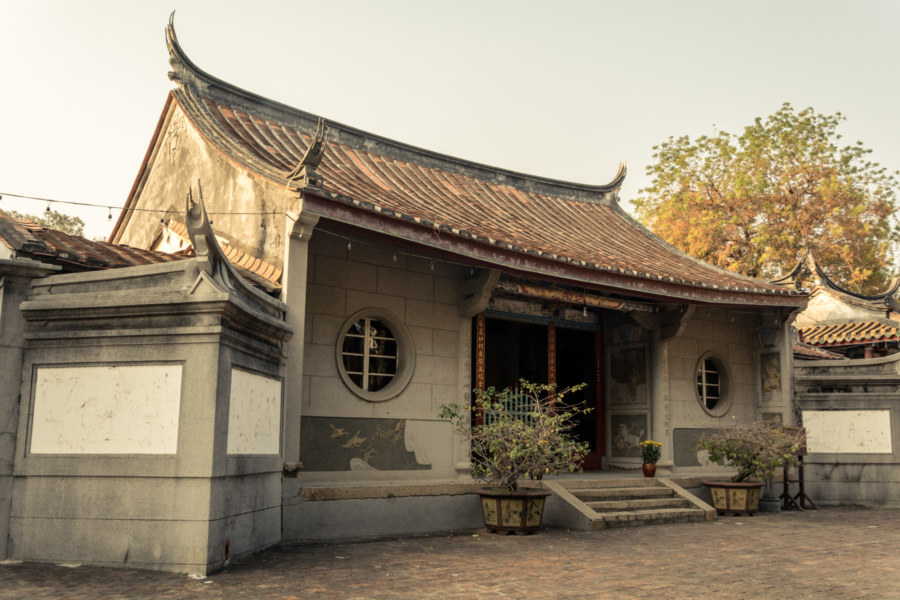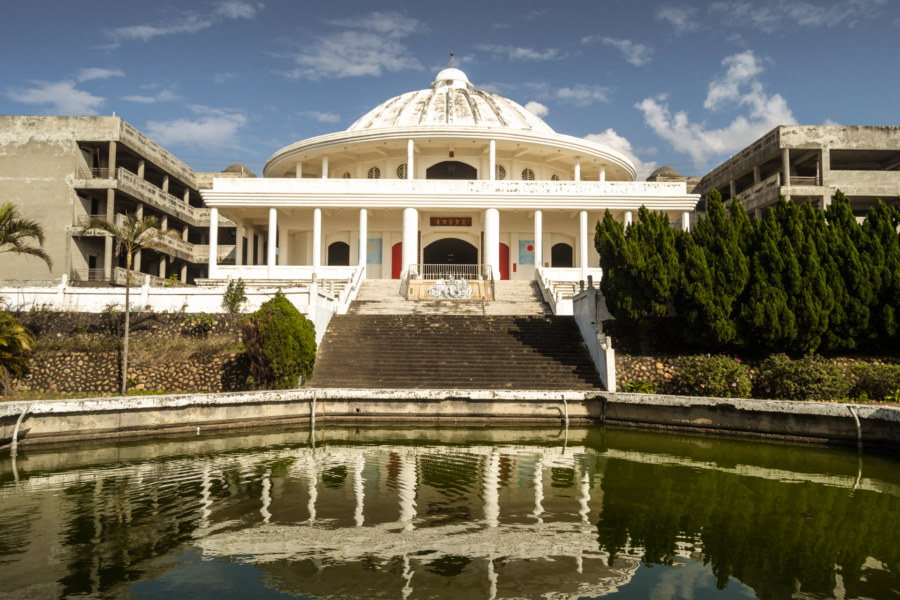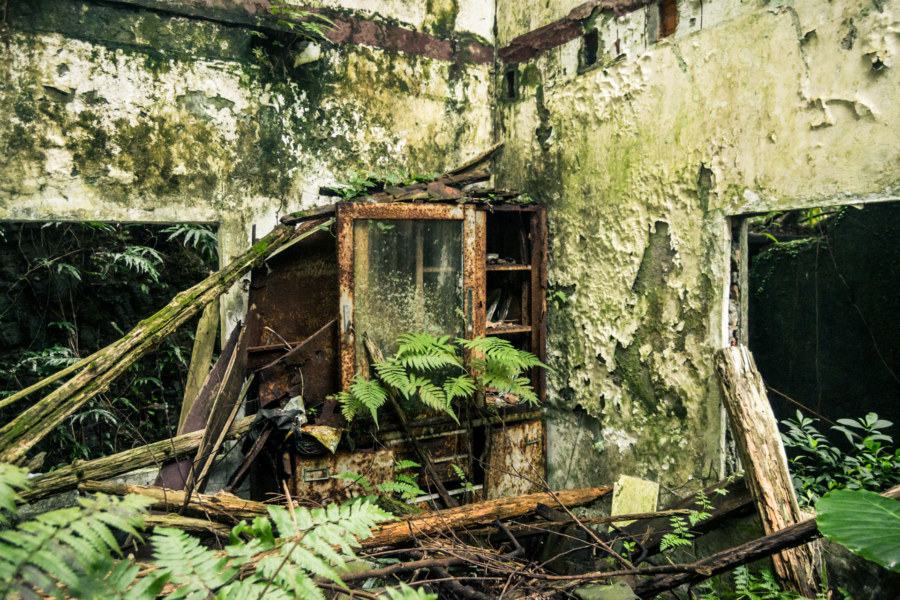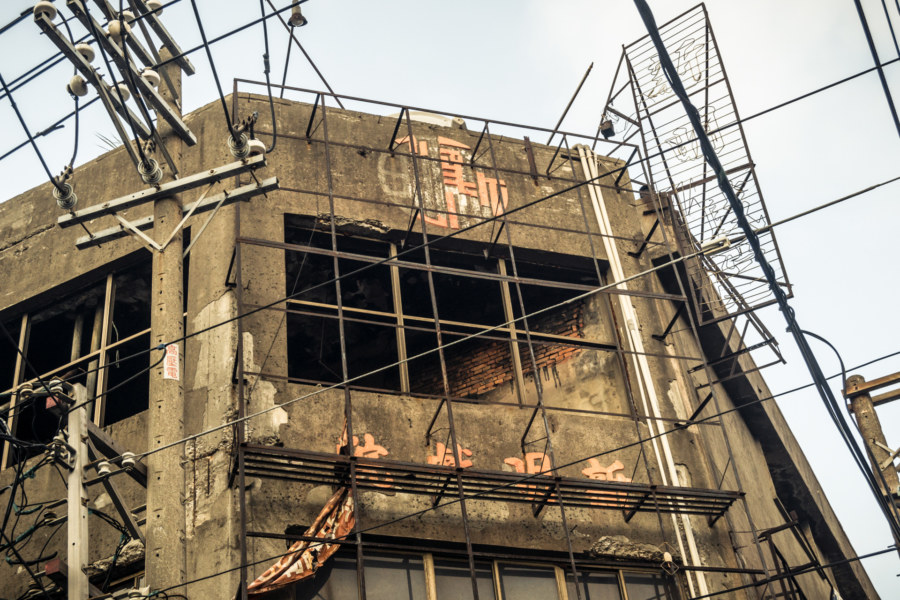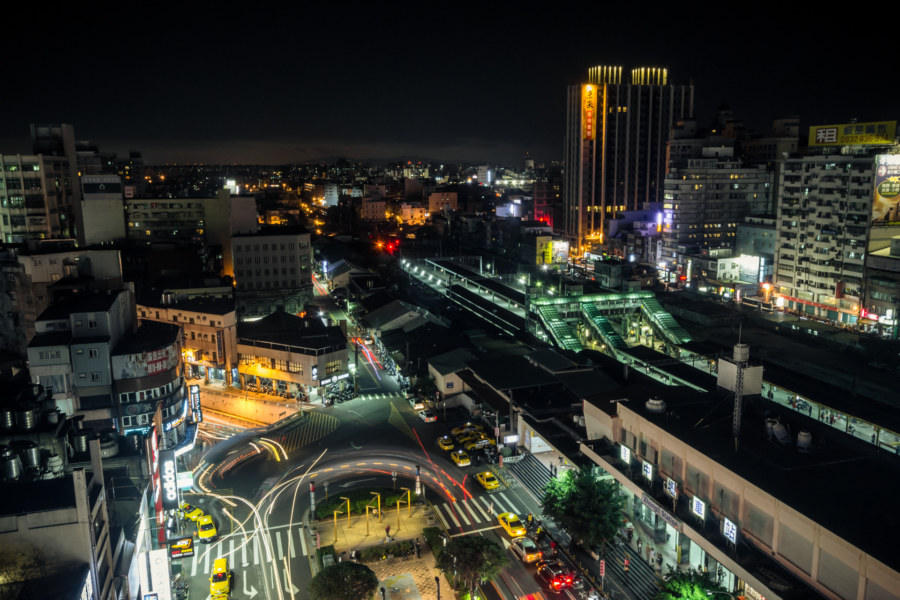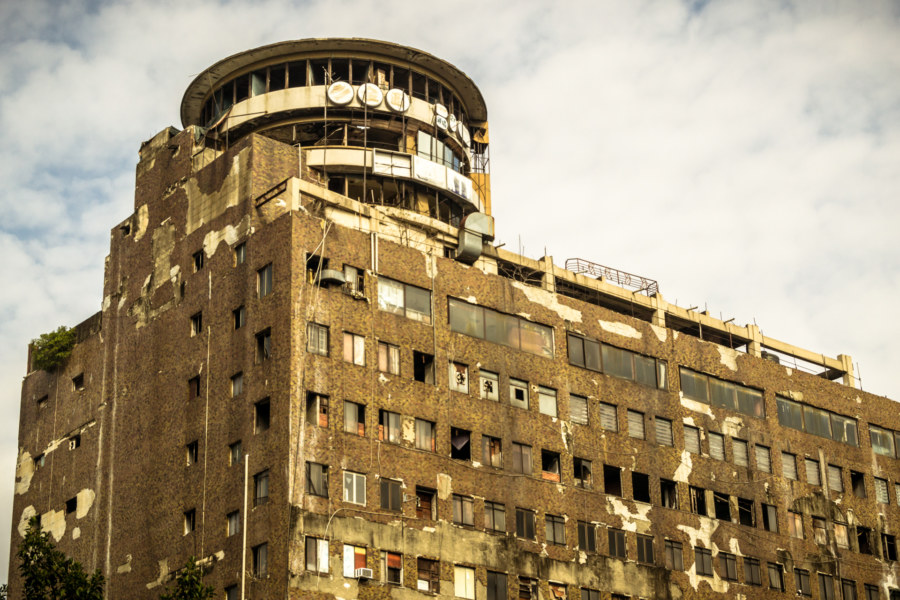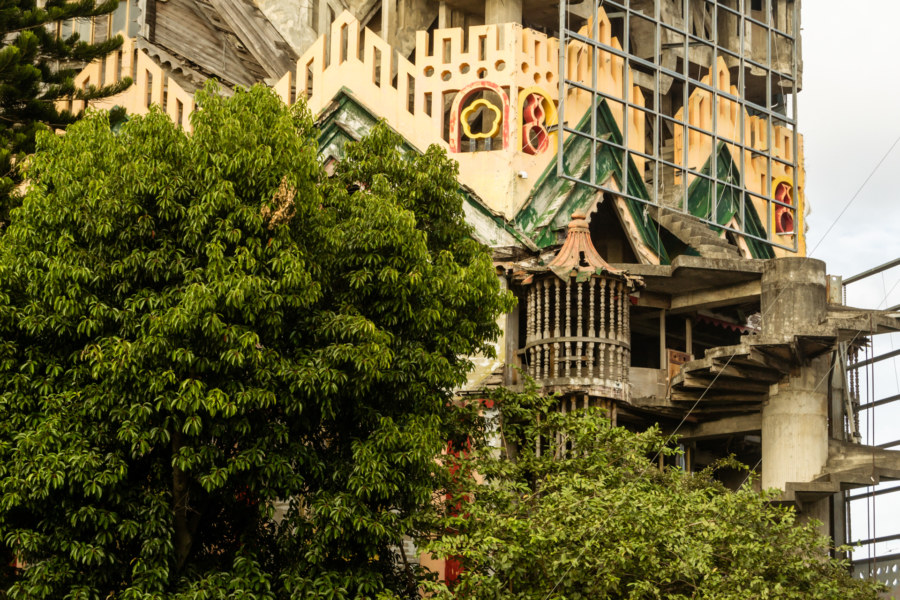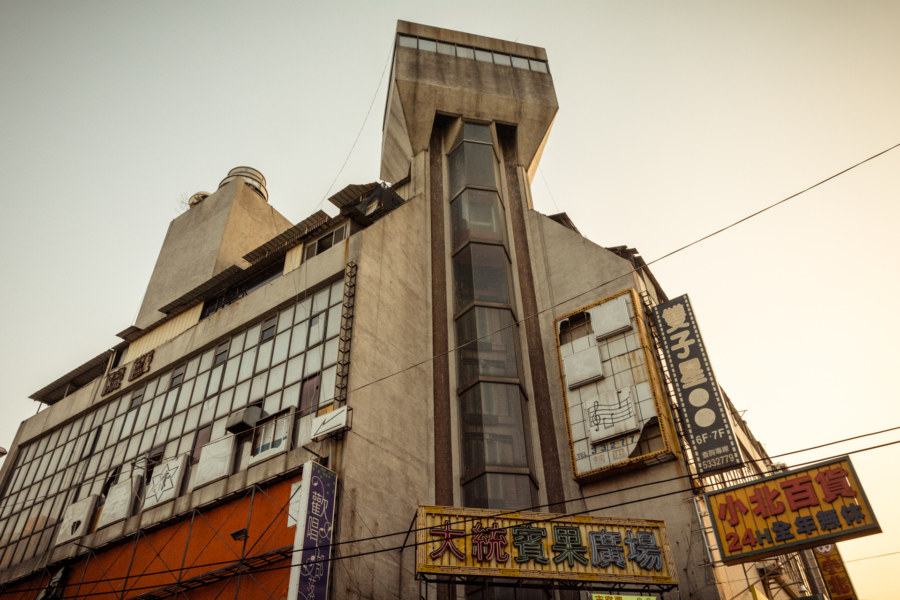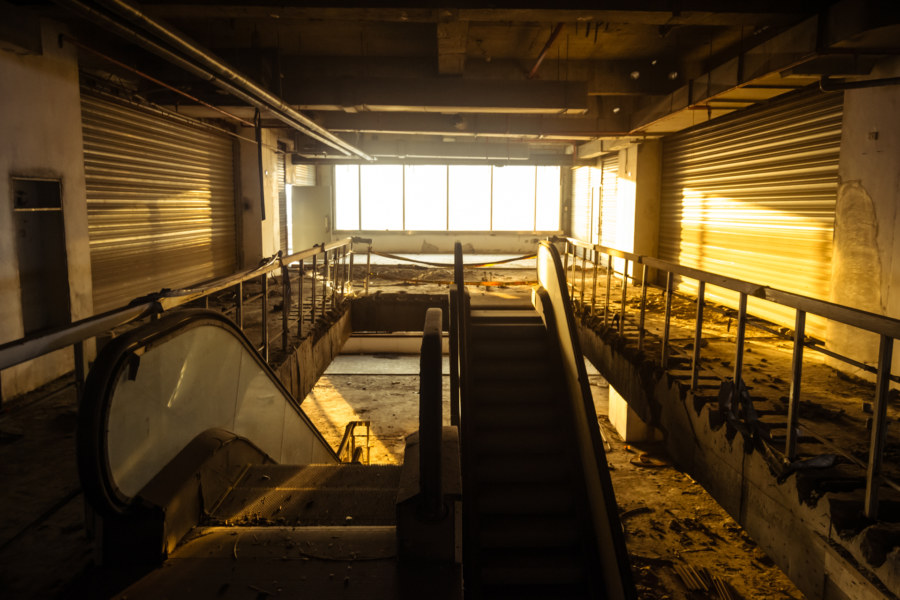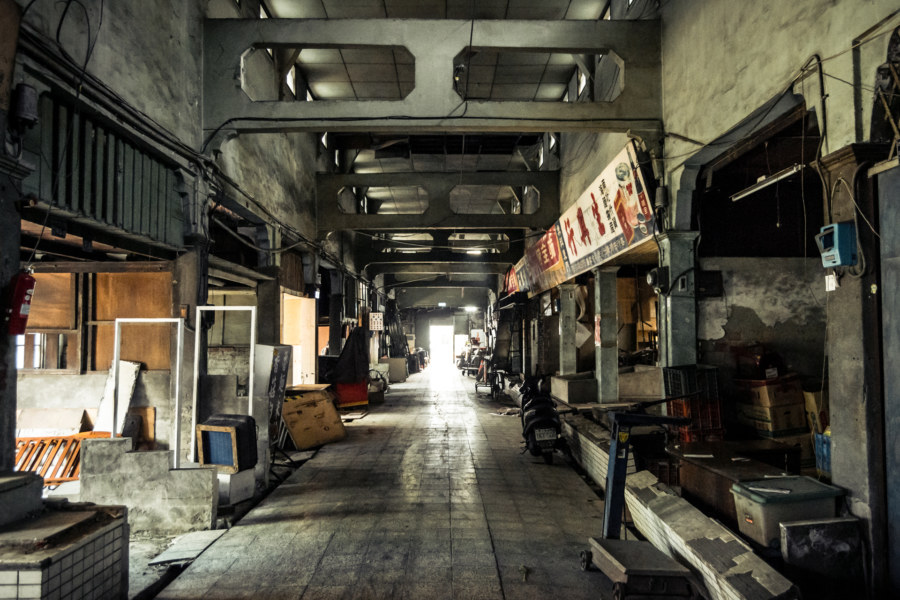Last year I briefly visited the historic Fahua Monastery 法華寺 in Tainan. Like many of my explorations of temples in Taiwan this one wasn’t planned in advance. I noticed the monastery from the roadside while riding through the back streets south of the train station and stopped to check it out on a whim. As it turns out, Fahua Monastery has quite a long and distinguished history—going all the way back to 1684—and the interior is unusually minimalistic and serene compared to most other temples I have visited here in Taiwan.
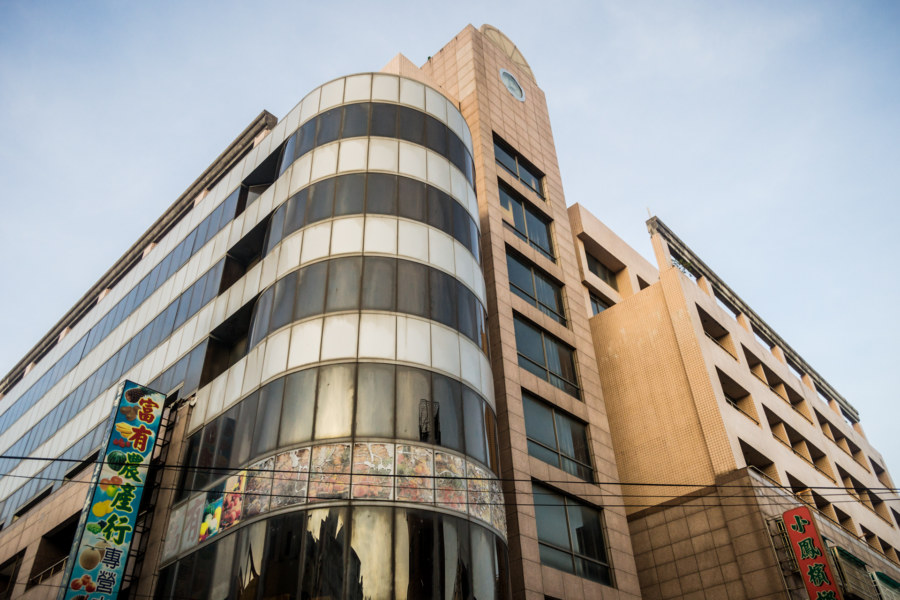
Disused places, as the name implies, are mostly abandoned but still in use somehow. This is fairly common in urban population centers where the upper levels of large buildings may be sealed off while commerce continues on the ground floor. See also: urbex.
Adjacent Terms
Wansheng Zizhu Monastery 萬聖紫竹寺
Wànshèng Zǐzhú Monastery (萬聖紫竹寺) is an unusually austere temple located on the seaward slope of the Dadu Plateau (大肚台地) in Shalu, Taichung. At first I assumed it was abandoned, for there was absolutely nobody around when I visited. The main hall is in an obvious state of disrepair and the two flanking buildings remain unfinished. After wandering into both altars I left with more questions than answers. Apart from the Putuoshan White Temple it isn’t at all like most other temples I’ve seen in Taiwan.
Ruchuan Village 入船里
Rùchuán Village 入船里 is a small community in Keelung, a historic port town of approximately 373,000 scattered among the rugged hills of northeastern Taiwan. Keelung’s growth over the last century has been constrained by a lack of flat land on which to build—with much of that concentrated at the foot of the harbour that now constitutes the downtown core. With few other options for expansion the city has sprawled upward along the hillsides and deep into the many valleys leading up from the port.
Zhongli Xinming Theater 中壢新明戲院
In the last year or so I have found and explored numerous abandoned movie theaters in Taiwan. It all started when I stumbled upon Datong Theater (大同戲院) in Taitung City last June. Since then I have learned much more about the Taiwanese cinema industry: how many theaters are likely to be found in a city of a given size, where they are likely to be found, when they were likely to have been abandoned, and so on. Not long after moving to Zhongli a few months ago I put this growing awareness to the test by cycling around town one morning, finding several theaters new to me, all within close proximity to one another. One of these, Xīnmíng Theater (新明戲院), is the subject of this post. Public records indicate the business was registered around 1980 and lapsed in 1997, though it almost certainly closed sometime before then.
Zhongli Caishen Building 中壢財神大樓
In my first dispatch from Zhongli I shared a photograph of the Cáishén Building 財神大樓, a rundown entertainment complex next to the train station that I meant to explore at some point. Not long after posting that I got around to checking it out—and much to my surprise, despite the incredibly rundown exterior most of the building is still occupied by hotels, daytime dance clubs, mobile phone booths, and other businesses serving the many Southeast Asian migrant workers of Taoyuan. There is, however, one part of the building that seemed obviously abandoned from street level; the skeletal outline of some kind of UFO-like structure on the rooftop demanded further investigation.
Qianyue Building 千越大樓
The Qiānyuè Building 千越大樓 is one of the most recognizable ruins in central Taiwan. Located only a short distance from Taichung Station 台中車站, it is impossible to miss if you bother to look up at some point while walking deeper into the city. This mixed-use commercial and residential high-rise was originally built in the 1970s and, thanks to its location at the very heart of the famous Taichung Electronics Street 台中電子街商圈, reached its apex during the consumer electronics boom of the late 1980s and early 1990s.
Longtan Monster House 龍潭怪怪屋
Longtan Monster House (龍潭怪怪屋) is a notorious architectural oddity on the northern edge of Longtan in Taoyuan, Taiwan. In Chinese it is also known as Yè Fābāo’s Monster House (葉發苞怪屋), after its owner and lead designer, and is officially named the Yeshan Building (葉山樓). It has been under construction for decades but at some point the money ran out and the owner has plastered it with advertisements, ostensibly to raise money to complete the project. Nowadays there is little to see beneath the incredible number of promotional banners hanging off the side of the building.
Douliumen Building 斗六門大樓
While living down in Changhua City last winter I made occasional forays up and down the TRA Western Line 西部幹線 to scope out places not commonly written about in English. One such place is Douliu, the administrative seat of Yunlin, which hardly earns more than a passing mention in the English language blogosphere. It was a worthwhile trip too—apart from the famous Tàipíng Old Street 太平老街 and the surprisingly large and lively Douliu Night Market 斗六夜市 I also chanced upon another abandoned entertainment complex, the Dòuliùmén Building 斗六門大樓, named after an archaic term for the city dating back to the 17th century. This building was also once home to the Shuāngzǐxīng or Gemini Theater 雙子星戲院.
Fuyou Building 富有大樓
At the end of a bicycle trip to Taitung City in the spring of 2015 I went wandering near the old train station, which had been transformed into the Taitung Railway Art Village 台東鐵道藝術村 in 2004. I had a hunch I might find some hulking derelict near former station front, perhaps an entertainment complex or shopping center in terminal decline, for the new Taitung Station is located far outside the downtown core. Sure enough, within minutes I noticed the telltale signs of decay on a large commercial building several streets over from the art village. This turned out to be the Fùyǒu Building 富有大樓, a genuine mosquito museum 蚊子館 built in the early 1990s under shady circumstances. It was later abandoned and has since become an eyesore and public health menace as well as a political hot potato for local officials.
Tainan West Market 台南西市場
West Market 西市場 is a historical site in downtown Tainan dating back to the earliest years of the Japanese colonial era. The first market building at this location was constructed in 1905, back when it fronted onto the milkfish farms of the Táijiāng Lagoon 台江內海. It suffered extensive damage when a catastrophic typhoon struck Tainan in August 1911. An expanded L-shaped structure was built in 1912, making it the largest market in southern Taiwan, but this was damaged by another typhoon in 1920, leading to another round of reconstruction, the results of which are still standing today. The old marketplace remains a hub of commercial activity in this part of the city—but many of its stalls were neglected or abandoned by the mid-2010s, when many of the photos in this article were captured. Presently the old market enjoys heritage status—and an extensive restoration effort was completed in 2020, transforming it into a bright and airy space.
